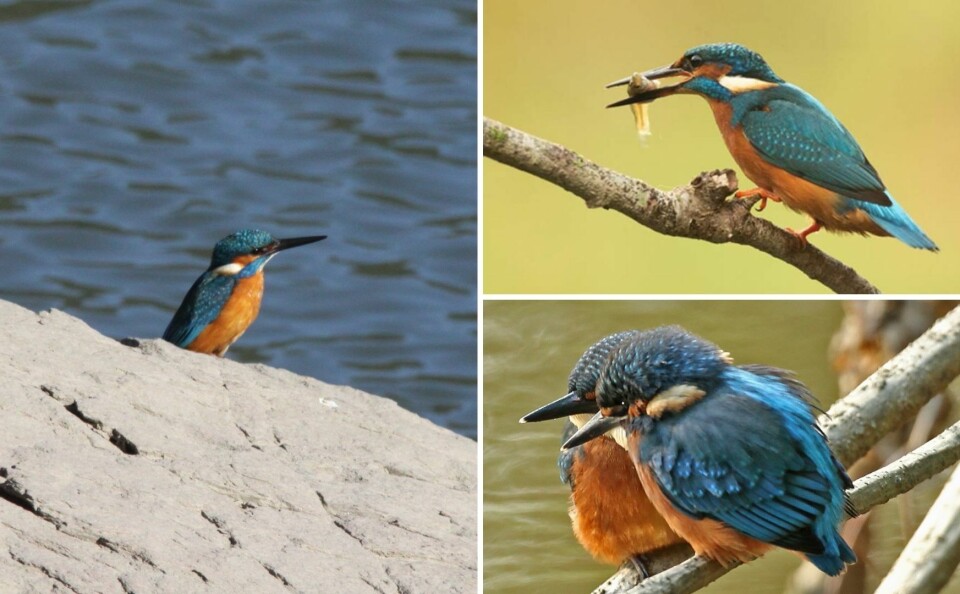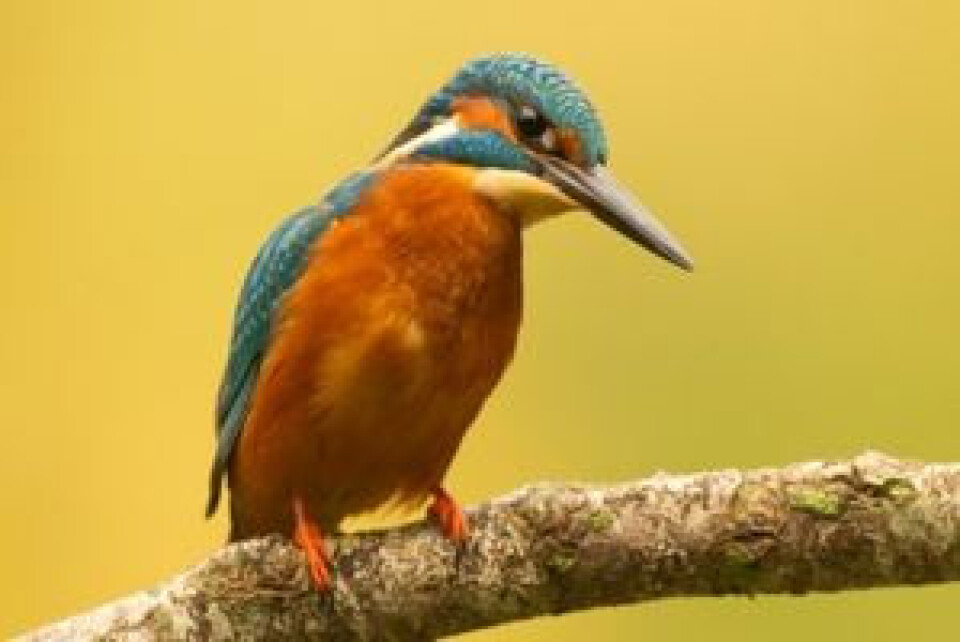-
Duck Cold! Four French phrases to use when it is freezing outside
We remind you of French expressions to use to describe the drop in temperature
-
January flowers in your French garden with scented viburnum
Our gardening columnist explores a pretty pink shrub that gives long-lasting winter displays
-
When and why do we say le moral dans les chaussettes?
We explore this useful expression that describes low spirits
Kingfisher family’s ‘busy blue sparks’ seen everyday on French stream
Nature watcher, Jonathan Kemp, marvels at the habits of kingfishers near his Aude home and explains why they are blue

One result of the deficit of rain this summer has been the reduction in flow of the tributaries of the main rivers, in our case the Aude.
We live in a water mill perched above the Brézilhou stream (ruisseau), and not for the first time see why the original mill, dating from about 900 years ago, was built here.
Upstream all the flow has gone underground, but whilst the waterfall that feeds the mill pond has slowed, it would have still supplied enough to keep the ponderous wheels turning.
Electric blue spark of a kingfisher
Somewhere upstream a pair of kingfishers (Martin-pêcheur) nest every year.
I have not found the current nest, the older ones of previous years have been washed away in the floods that will eventually return.
This year we have seen a kingfisher nearly every day; there is often a spark of electric blue and the piercing cry as this year’s family make the kilometre journey down to the main river to hunt for their meals – and sometimes they stop at the millpond and try their luck here.
Read more: Song birds in France and how to recognise their tune
Kingfisher family defend water together
So, a few days ago, I was delighted to see three fly away simultaneously from various perches round the pond.
They would have been from the same family; a kingfisher – both males and females – will hold and defend a length of water sufficient for their needs, and they may merge their territories together in February if they choose to breed together.
If successful, the six to seven eggs laid in March or early April will hatch at the end of the nest tunnel built in a sandy bank where a chamber is excavated.
They fledge after about twenty-five days, are fed for a further four and then the parent couple will drive them away – so quickly that some of them have not yet learnt to fish for themselves, and thus die – and then go on to have one, even two more clutches in the same year.
Read more: Nature watch in France: identify doves and how to help injured birds
Fair feeding routine in the nesting chamber
Researchers have seen that there is a wonderful feeding arrangement in the nesting chamber, where the chicks rotate in a sort of star formation waiting for the next parent to come back with its beak full of fish.
If this works each chick gets its turn, and then they all shuffle around!
Whether it is quite so perfect as this is another question, but ideally this is how it works.
Kingfisher numbers fluctuate wildly from year to year
A hard winter will decimate numbers, but, with breeding success, they can bounce back.
Most importantly, by mid-September each bird will have had to establish its own winter territory, to provide enough food for the hard months ahead.
Only a quarter of the adults survive from one season to the next, and very few breed for more than one season.
All this shows that the species are living in the fast lane.
Each adult has to eat at least its body weight in small fish, or shrimps and tadpoles every day, and in the nest every gaping mouth will eat six or seven minnows a day.
A busy life, and often over very quickly.

Kingfisher fixing on its prey; Photo: Adrian Henderson
Note the intense stare in the photo above; having fixed a prey and judged its depth, it will dive, opening its beak and shutting the protective eyelid, in effect diving blind – but it works!
Why are kingfishers bright blue?
Needless to say the most striking thing about kingfishers that we, humans, notice, is their brilliant colours.
So the question this brings is why evolution has developed something so dazzlingly extraordinary. Interestingly, most of my photos show only male kingfishers, the females have a red base to the lower beak – they ‘wear lipstick’, the joke goes.
However, my friend Adrian has one photo that shows a hint of red at the base of the beak, so a female, but probably a juvenile.
Read more: Largest nature photography festival in Europe celebrates 25 years
Ever since the time of Darwin it has been known, and proven by modern research, that it is very often the females that make sexual selection of mates on criteria that we humans are just to slow and un-observant to see, unless we use photography and scientifically study the colours (and sounds and movements).
Many birds also see in the UV spectrum, and so a colour will have a range of subtlety to them beyond our abilities.
All these clues can give a choosy female information as to the health and vigour of a male bird, and she will choose to mate with him – or not – on what she is able to detect, sometimes in a flash, as he patrols a neighbouring territory.
Thus, a brighter blue and vibrant orange breast may lead her to choose a mate and pass on those characteristics to their progeny, and thus evolution works its magic.
Broad-tailed hummingbird good example of speed in courtship
An example of the speed of existence in the avian world is shown by a bird that none of us will see, unless we travel to America; the broad-tailed hummingbird.
It has a display flight that is “one of the world’s coolest, weirdest courtship displays” according to Mary Caswell Stoddard who studied them in Colorado.
The details are complex and wonderful, but suffice it to know that the male dives down on a perched female at a speed of 385 times its body length per second, relatively nearly twice the speed of a diving peregrine (faucon pèlerin), or the space shuttle during atmospheric re-entry (207 body lengths a second); at full speed at the bottom of his dive his gorget [patch of colored feathers found on the throat] flashes a vivid, sexy magenta, then its iridescent nature causes a change – in a mere 120 milliseconds – from bright red to dark green, as he passes over”.
The amazing thing is that the female can see these precise details, judge his vigour by the speed and the brilliance of his plumage, and makes a mate choice as a result...
Related articles
Traditional skylark hunting re-authorised in France again
Walkers in French Alps track sheepdogs with GPS - incidents reduced
Blue tits and goats are French city’s secret weapons against invaders
























